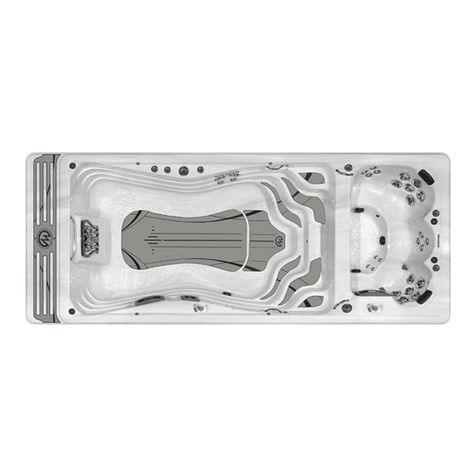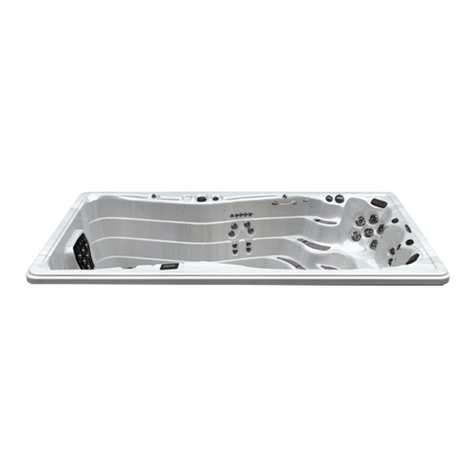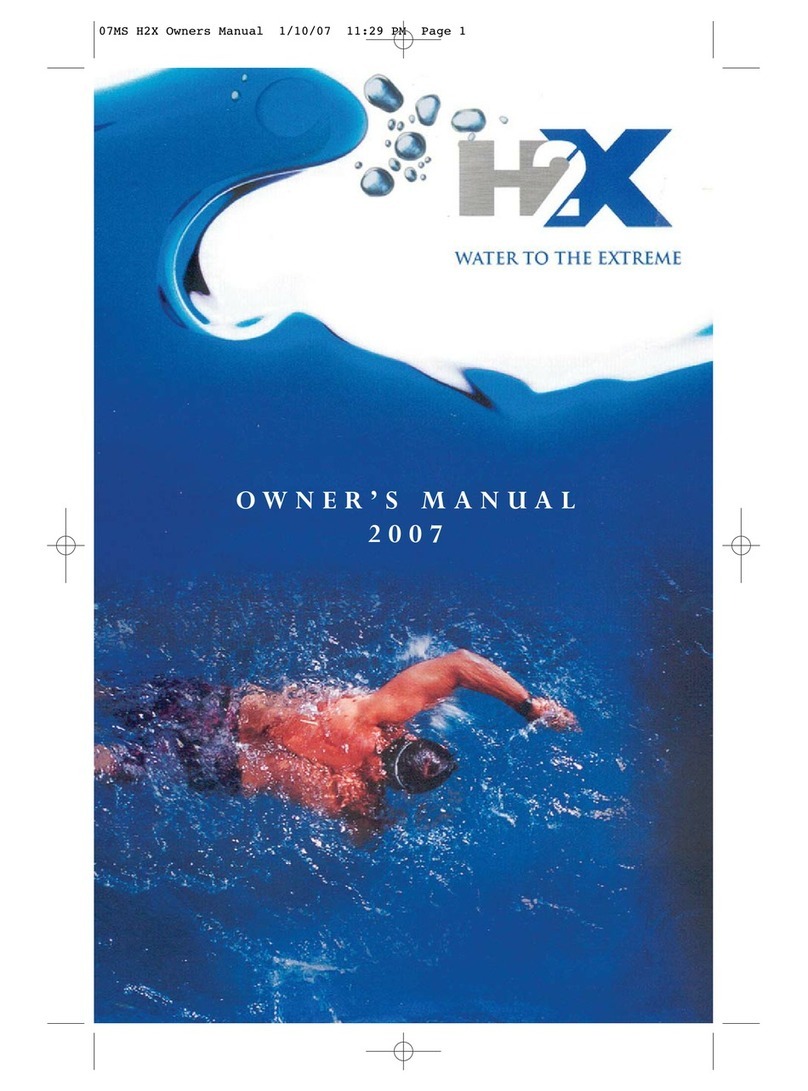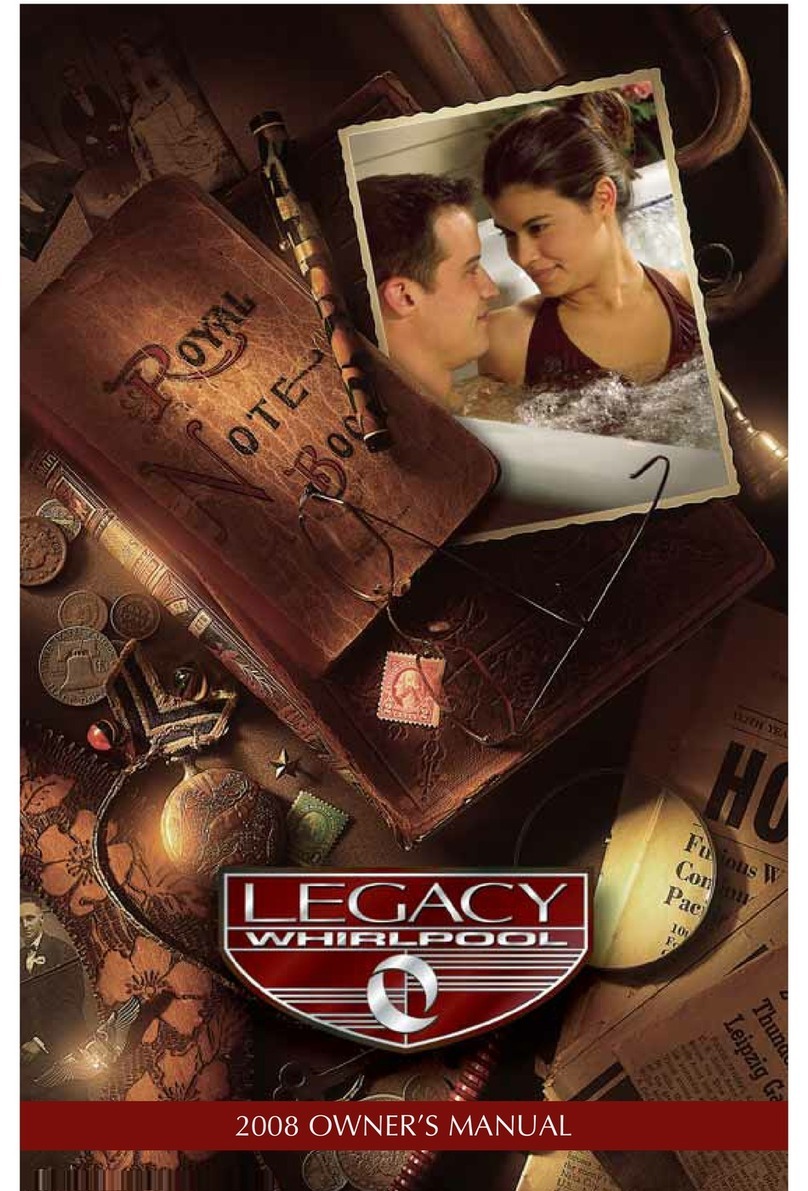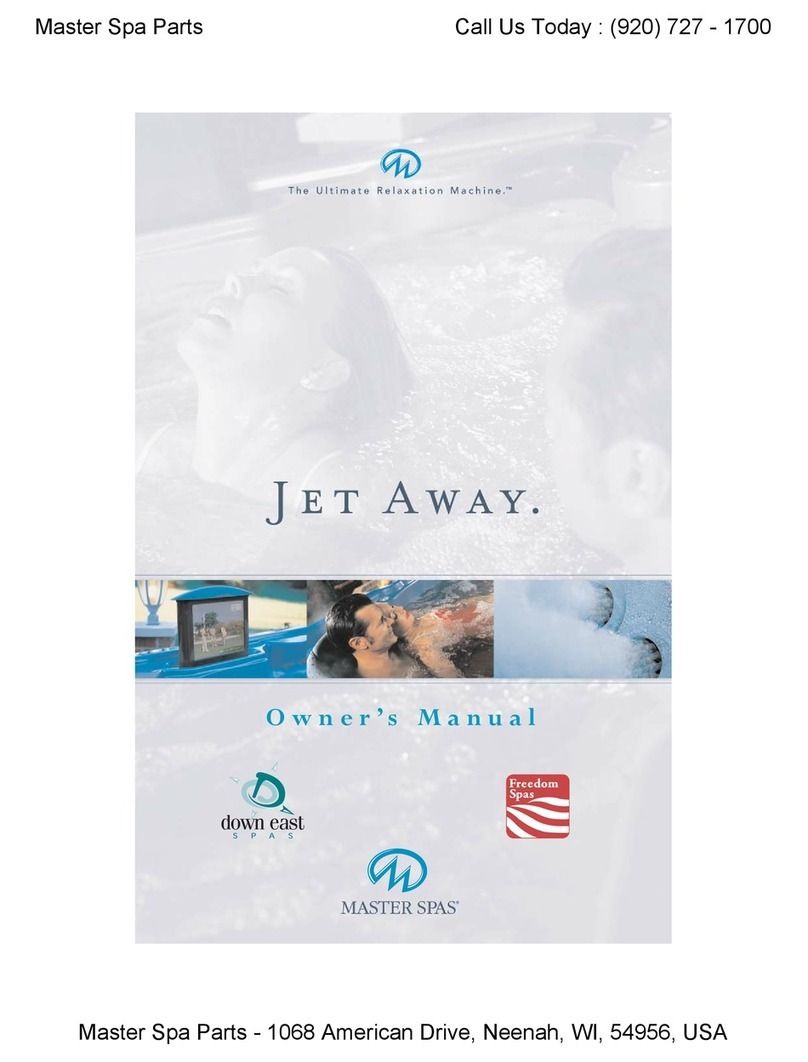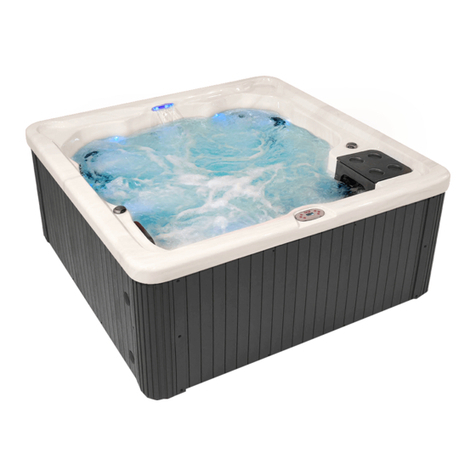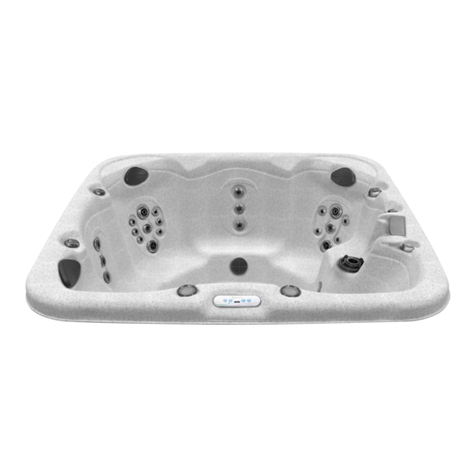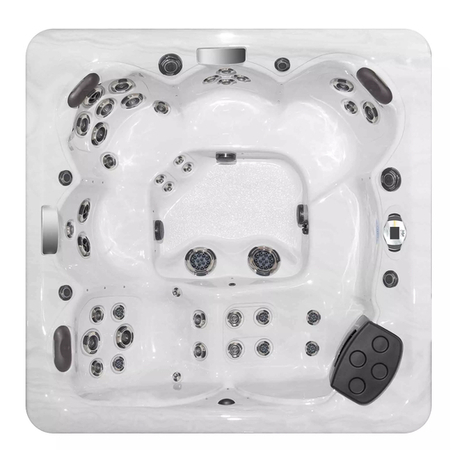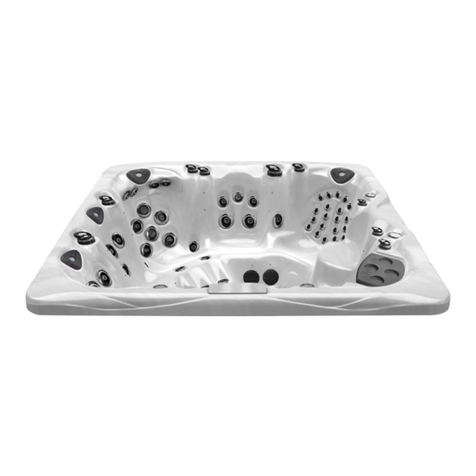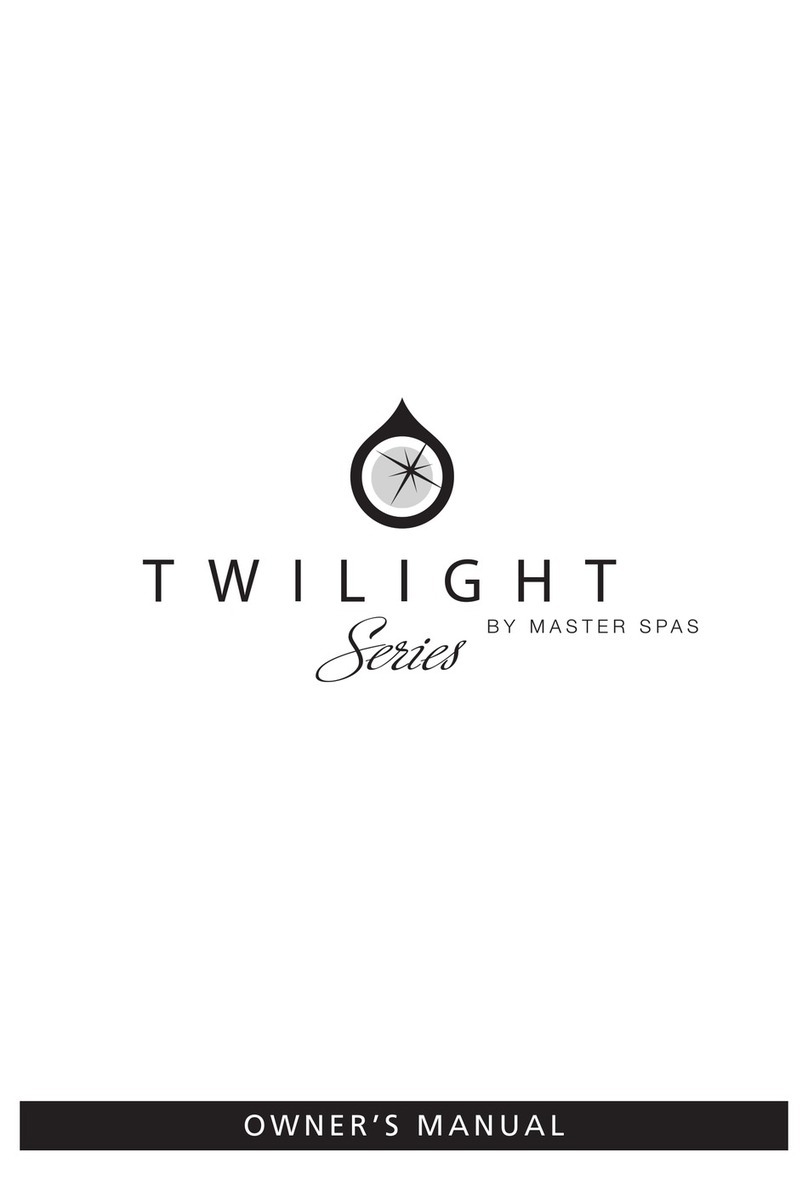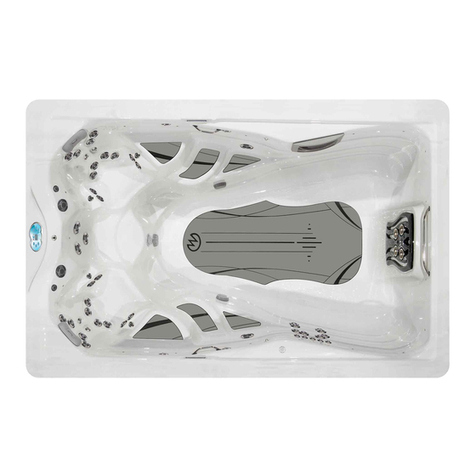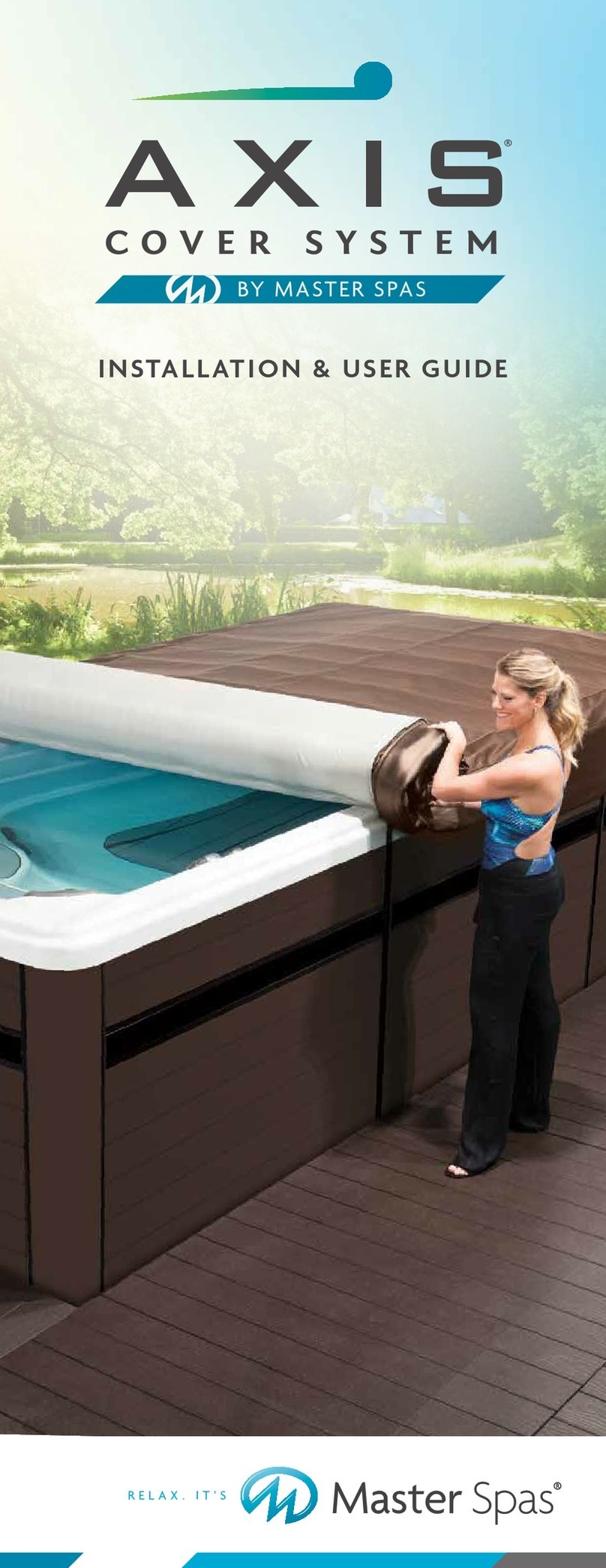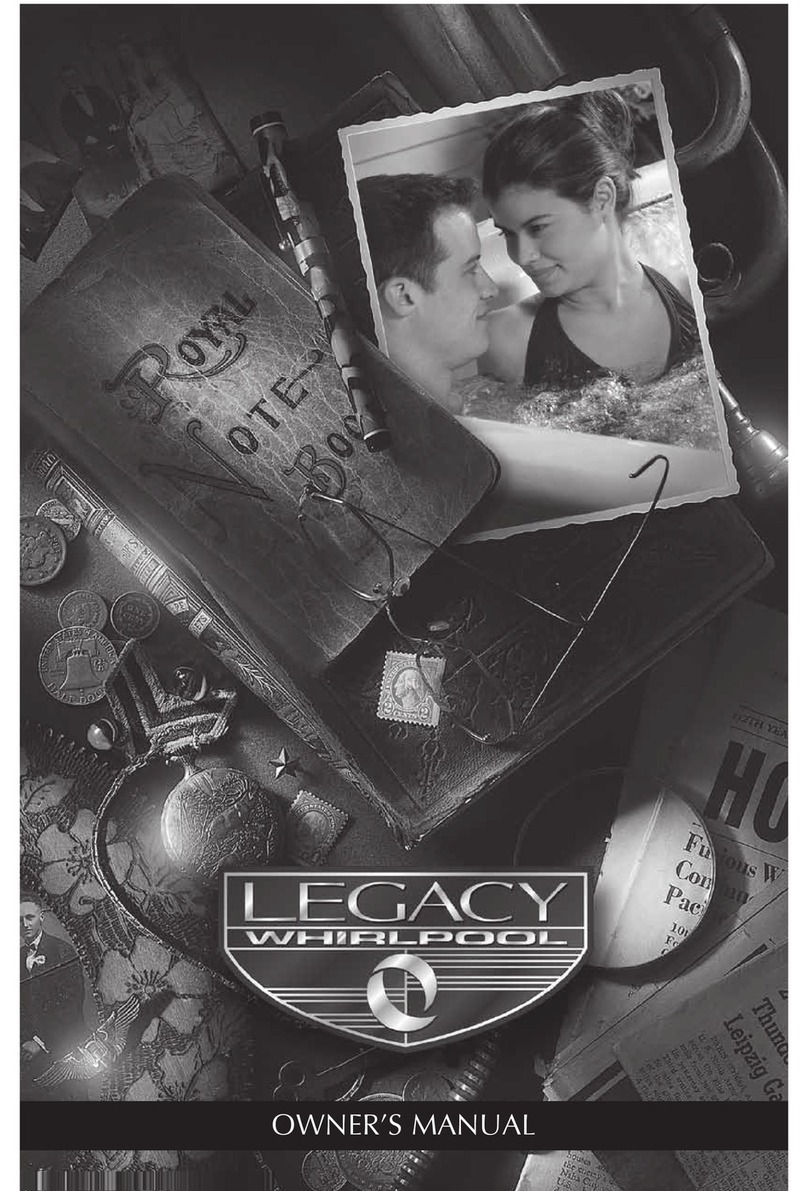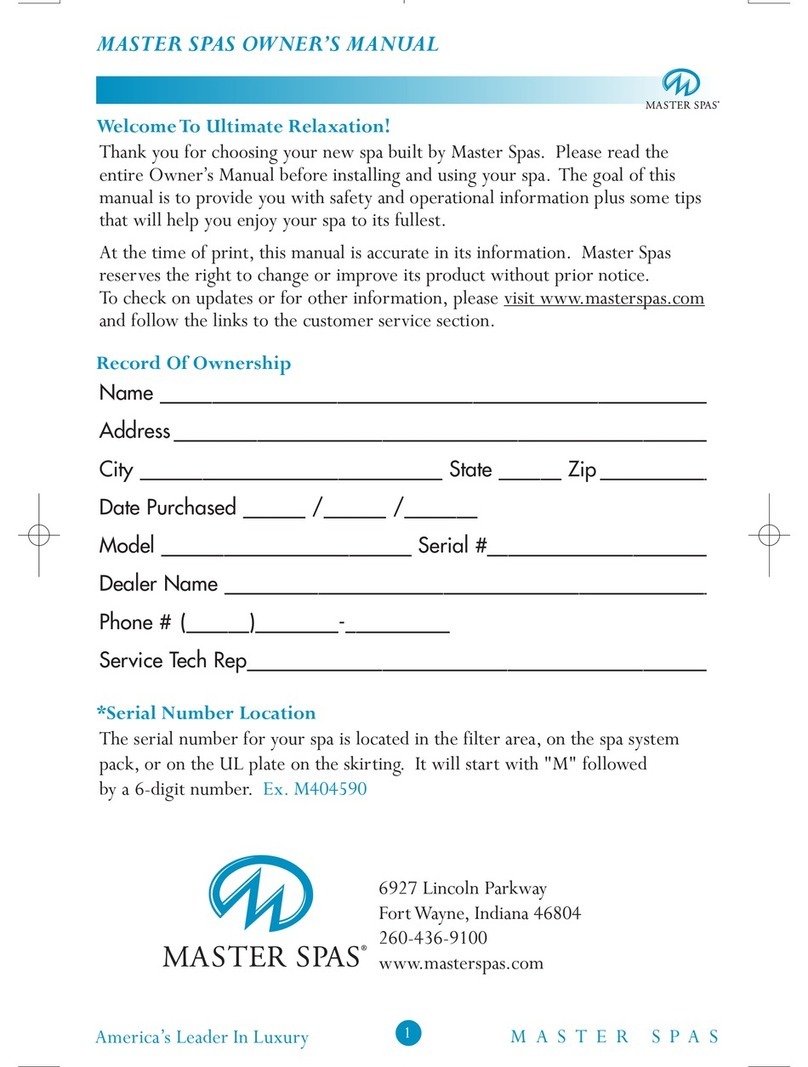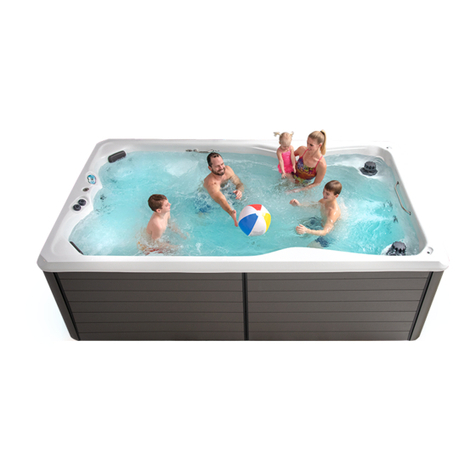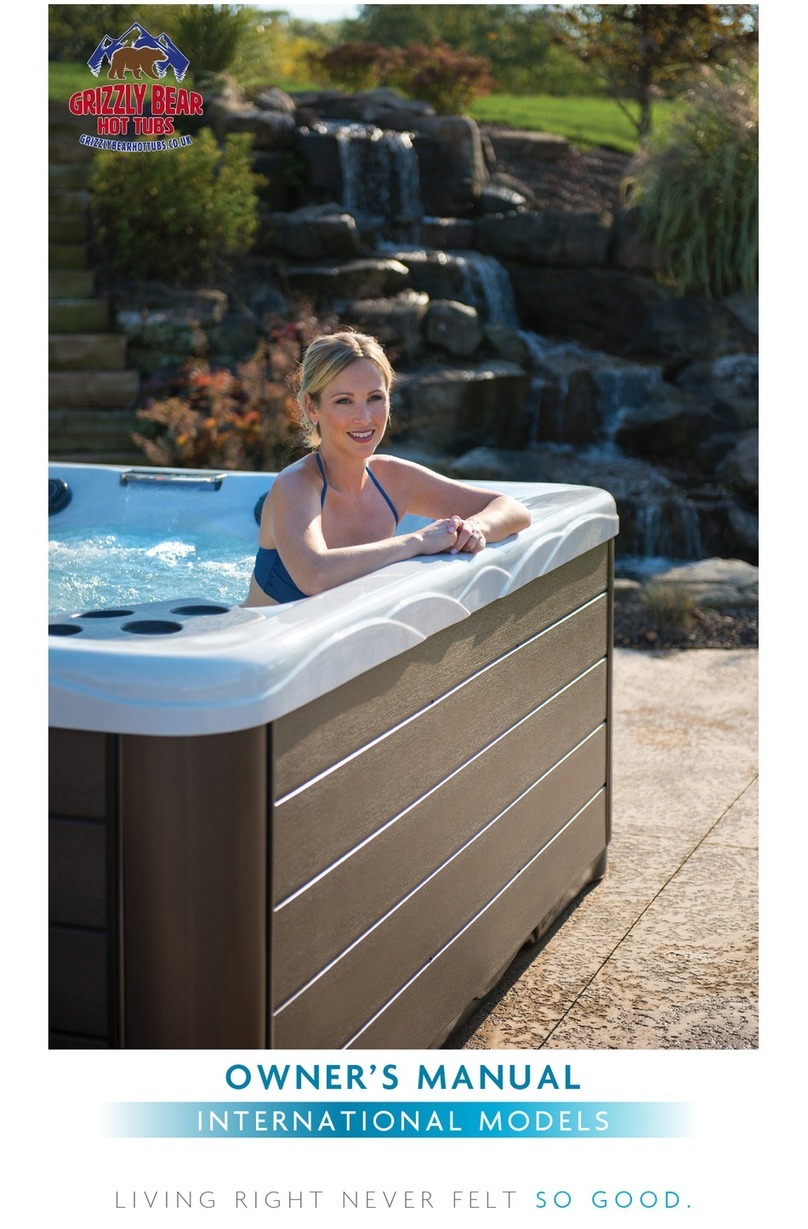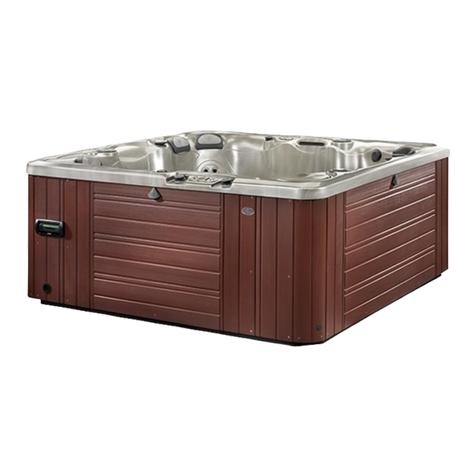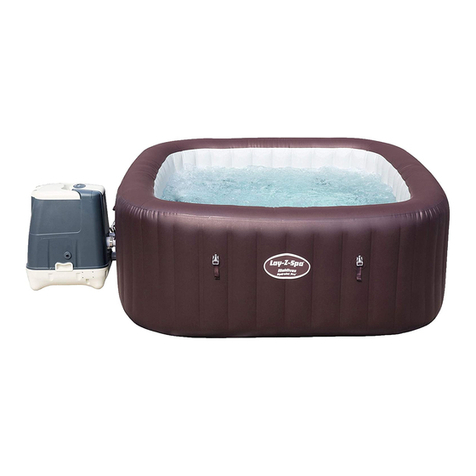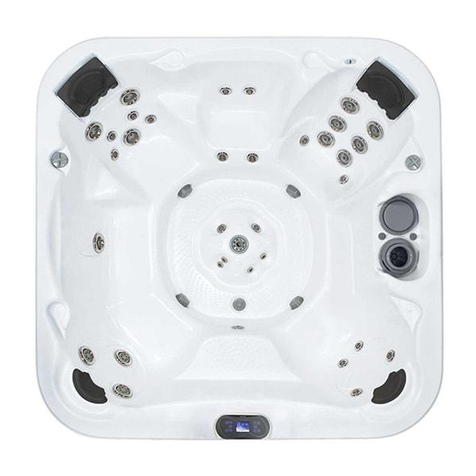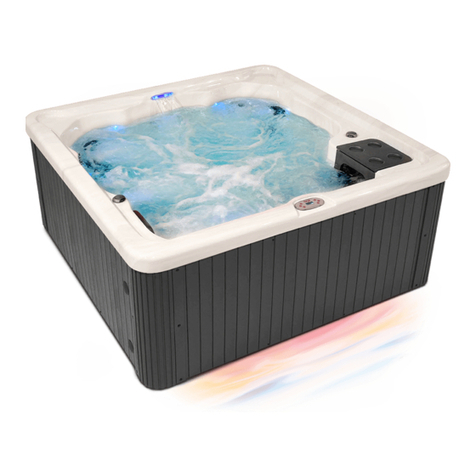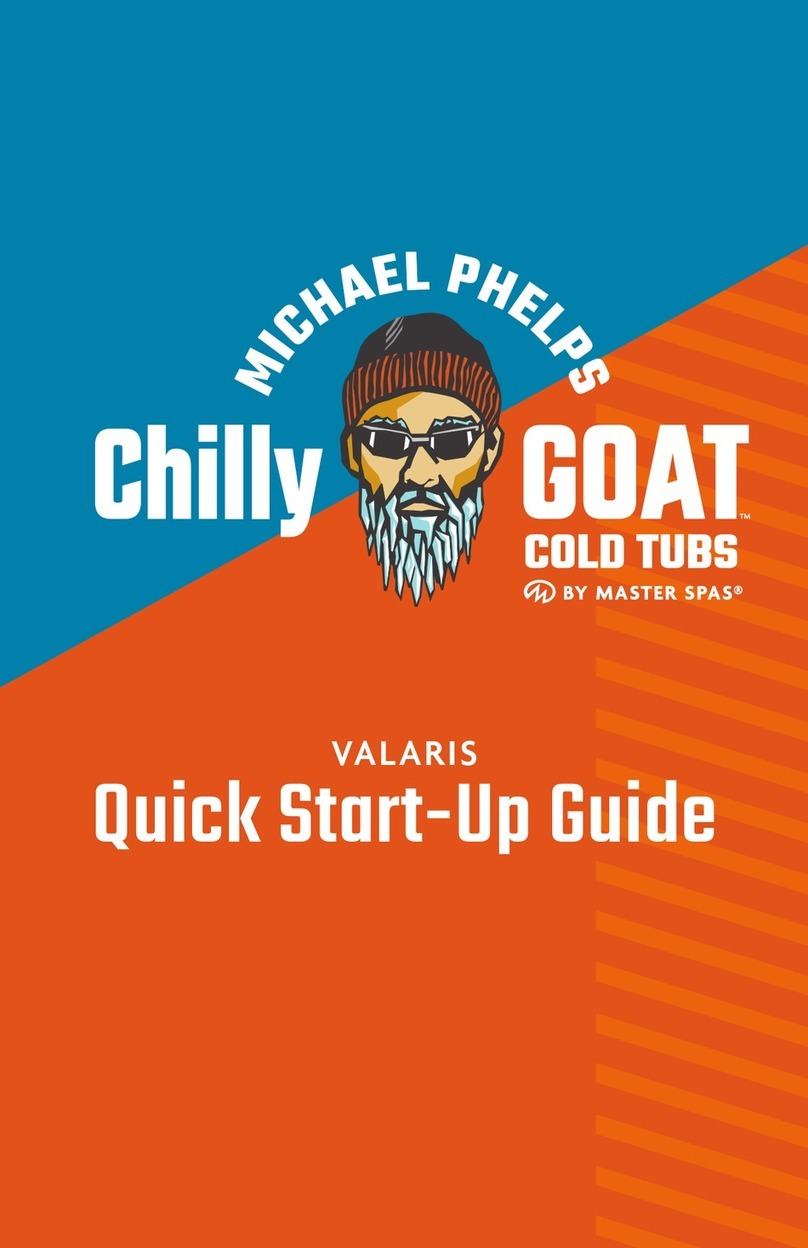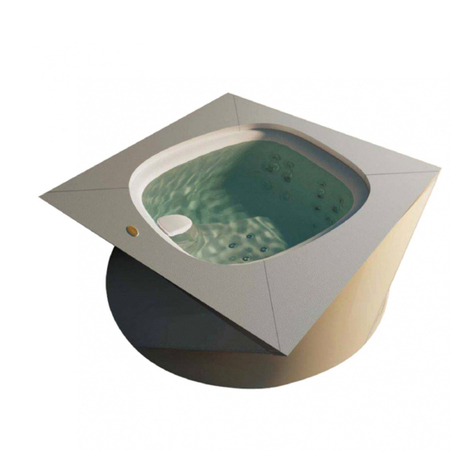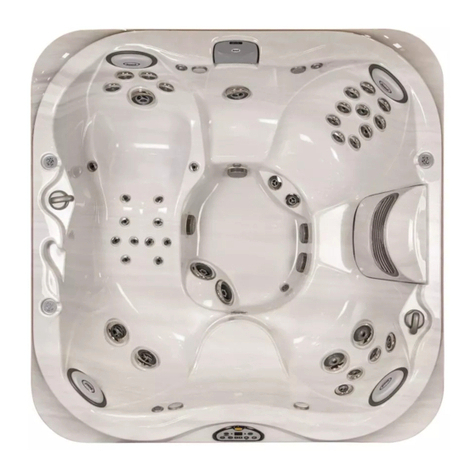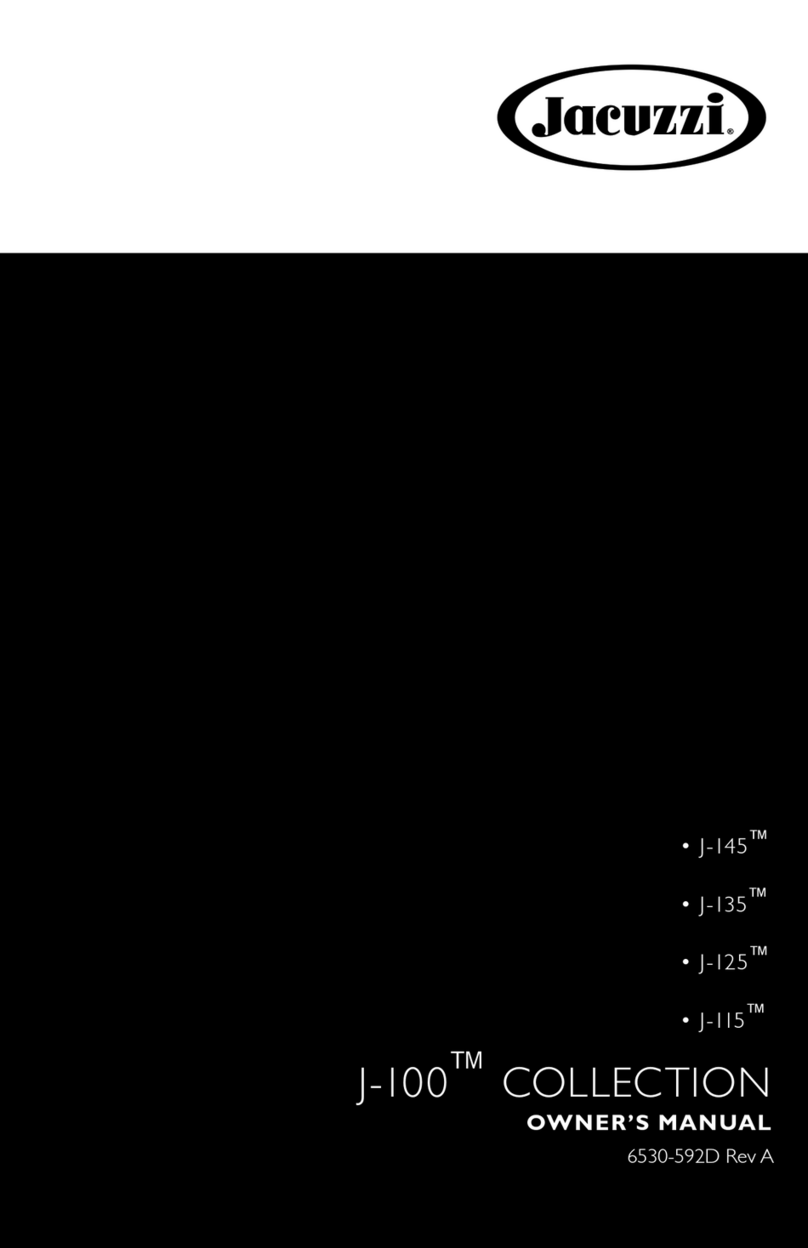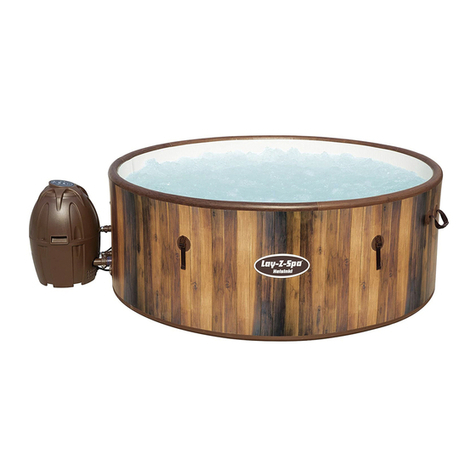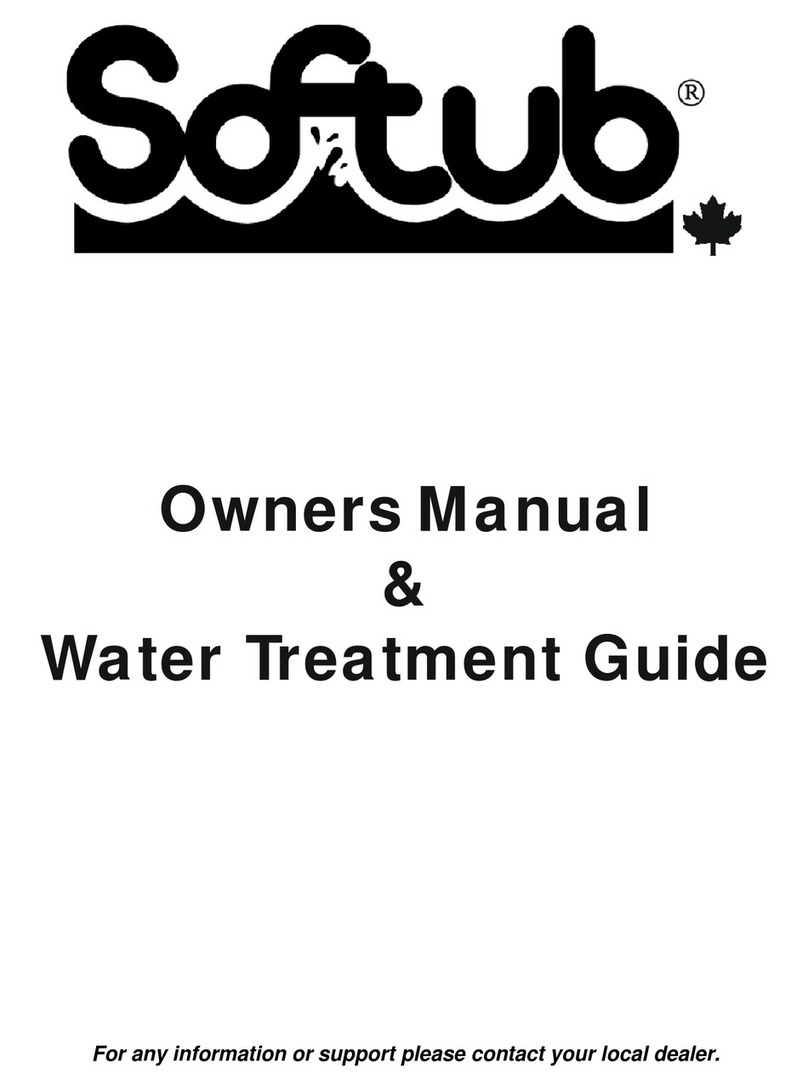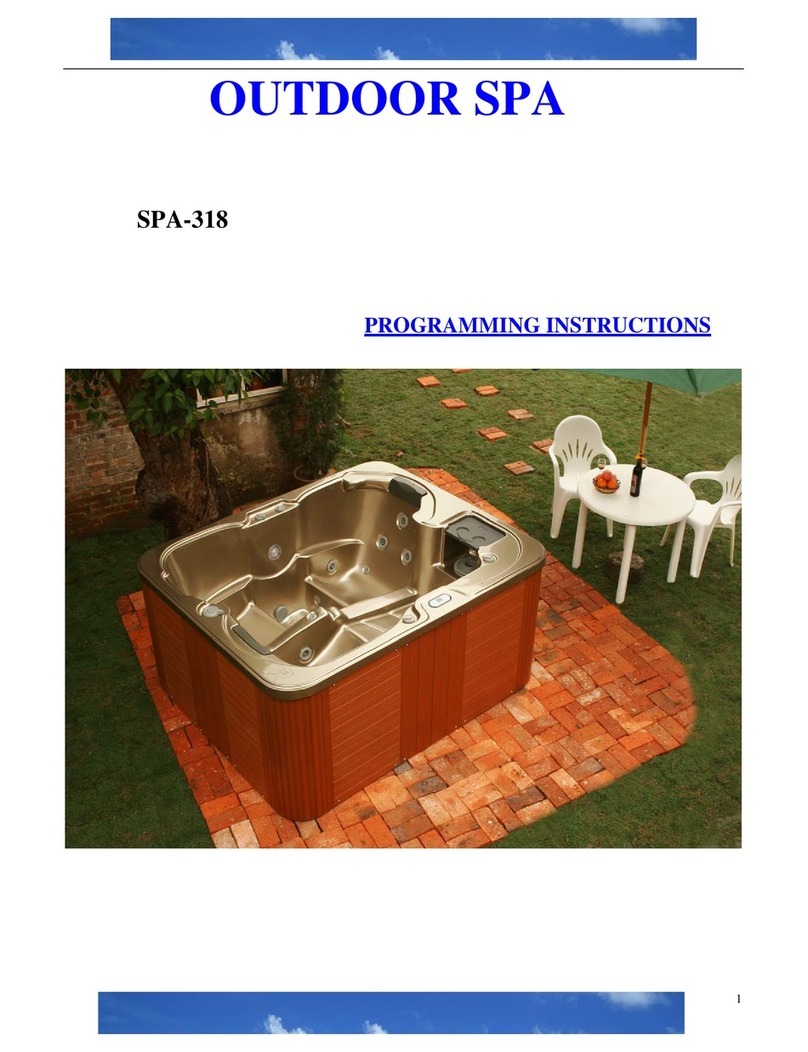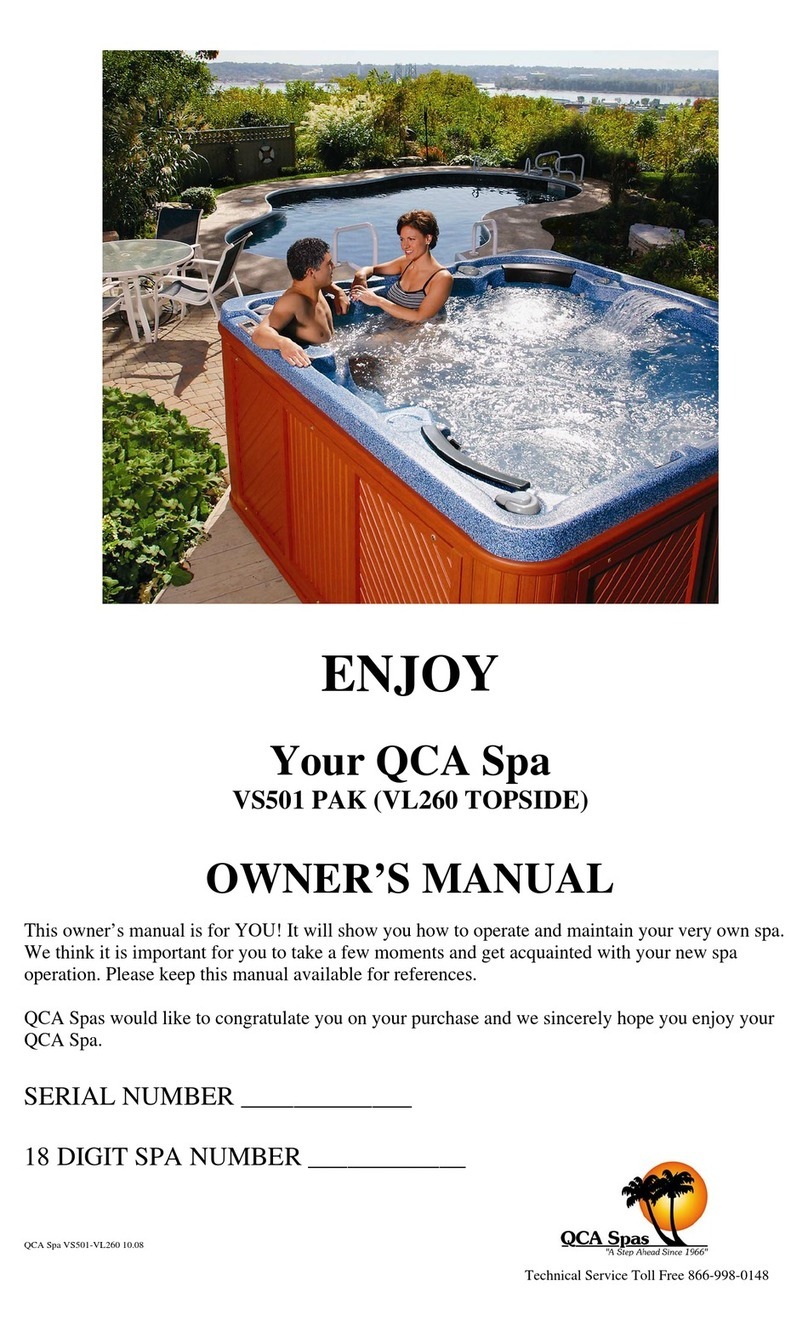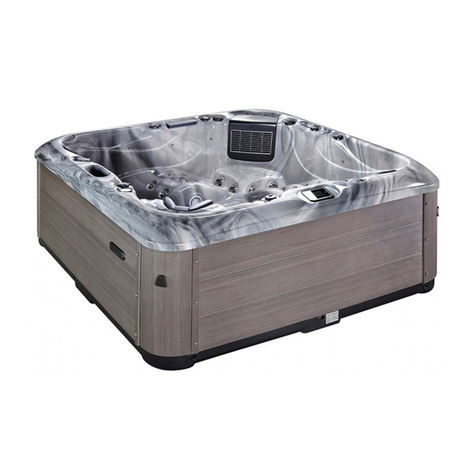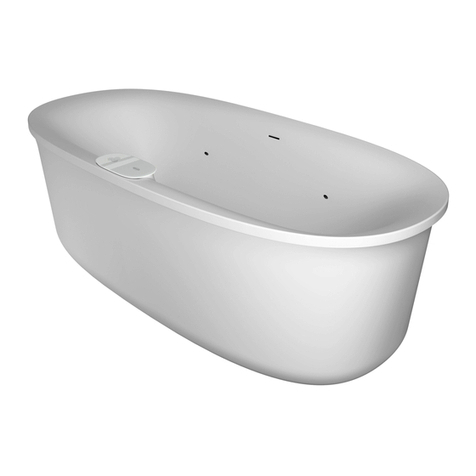
2
GFCI must be tested before each use. With
the product operating, open the service door.
When the product stops operating, this merely
indicates that the door is equipped with an
electrical interlock. Next, push the test button
on the GFCI and close the service door. The
product should not operate. Now open the
service door, push the reset button on the GFCI
and close the service door. The product should
now operate normally. When the product fails
to operate in this manner, there is a ground
current flowing indicating the possibility of an
electric shock. Disconnect the power until the
fault has been identified and corrected.
DANGER: Risk of Accidental Drowning.
Extreme caution must be exercised to prevent
unauthorized access by children. To avoid
accidents, ensure that children cannot use this
Chilly GOAT unless they are supervised at
all times.
DANGER: Risk of Injury. The suction fittings
in this Chilly GOAT are sized to match the
specific water flow created by the pump.
Should the need arise to replace the suction
fittings or the pump, be sure that the flow rates
are compatible. Never operate Chilly GOAT
if the suction fittings are broken or missing.
Never replace a suction fitting with one rated
less than the flow rate marked on the original
suction fitting.
DANGER: Risk of Electric Shock. Install at
least 5 feet (1.5m) from all metal surfaces. As
an alternative, a Chilly GOAT may be installed
within 5 feet of metal surfaces if each metal
surface is permanently connected by a
minimum 10AWG (5.26mm2) solid copper
conductor to the wire connector on the
terminal box that is provided for this purpose.
Be sure to review and comply with any
overruling local or national
applicable regulations.
DANGER: Risk of Electric Shock. Do not
permit any electric appliance, such as a light,
telephone, radio, or television, within 5 feet (1.5
m) of a Chilly GOAT.
WARNING: To reduce the risk of injury:
a) The water in a Chilly GOAT should never
exceed 104˚F (40˚C). Water temperatures
between 100˚F (38˚C) and 104˚F (40˚C) are
considered safe for a healthy adult. Lower
water temperatures are recommended for
young children and when Chilly GOAT use
exceeds 10 minutes. Persons with any medical
condition should seek medical advice before
using a Chilly GOAT.
b) Since excessive water temperatures have
a high potential for causing fetal damage
during the early months of pregnancy,
pregnant or possibly pregnant women
should limit Chilly GOAT water temperatures
to 100˚F (38˚C) and duration of use and
should also seek medical advice.
c) Before entering a Chilly GOAT, the user
should measure the water temperature with
an accurate thermometer since the tolerance
of water temperature-regulating devices
varies.
d) The use of alcohol, drugs, or medication
before or during Chilly GOAT use may lead
to unconsciousness with the possibility of
drowning.
e) Obese persons and persons with a history
of heart disease, low or high blood pressure,
circulatory system problems, or diabetes
should consult a physician before using a
Chilly GOAT.
f) Persons using medication should consult a
physician before using a Chilly GOAT since
some medication may induce drowsiness
while other medication may affect heart rate,
blood pressure, and circulation.
(For Chilly GOATs with a gas heater)
WARNING: Risk of Suocation. This Chilly
GOAT is equipped with a gas heater and is
intended for outdoor use only unless proper
ventilation can be provided for an indoor
installation.
SAVE THESE
INSTRUCTIONS
HYPERTHERMIA
Hyperthermia occurs when the internal
temperature of the body reaches a level several
degrees above the normal body temperature
of 98.6°F (37˚C). Prolonged immersion in hot
water may induce hyperthermia.
THE SYMPTOMS OF
HYPERTHERMIA INCLUDE:
• Dizziness
• Fainting
• Drowsiness
• Lethargy
• Increase in
Internal Body
Temperature
